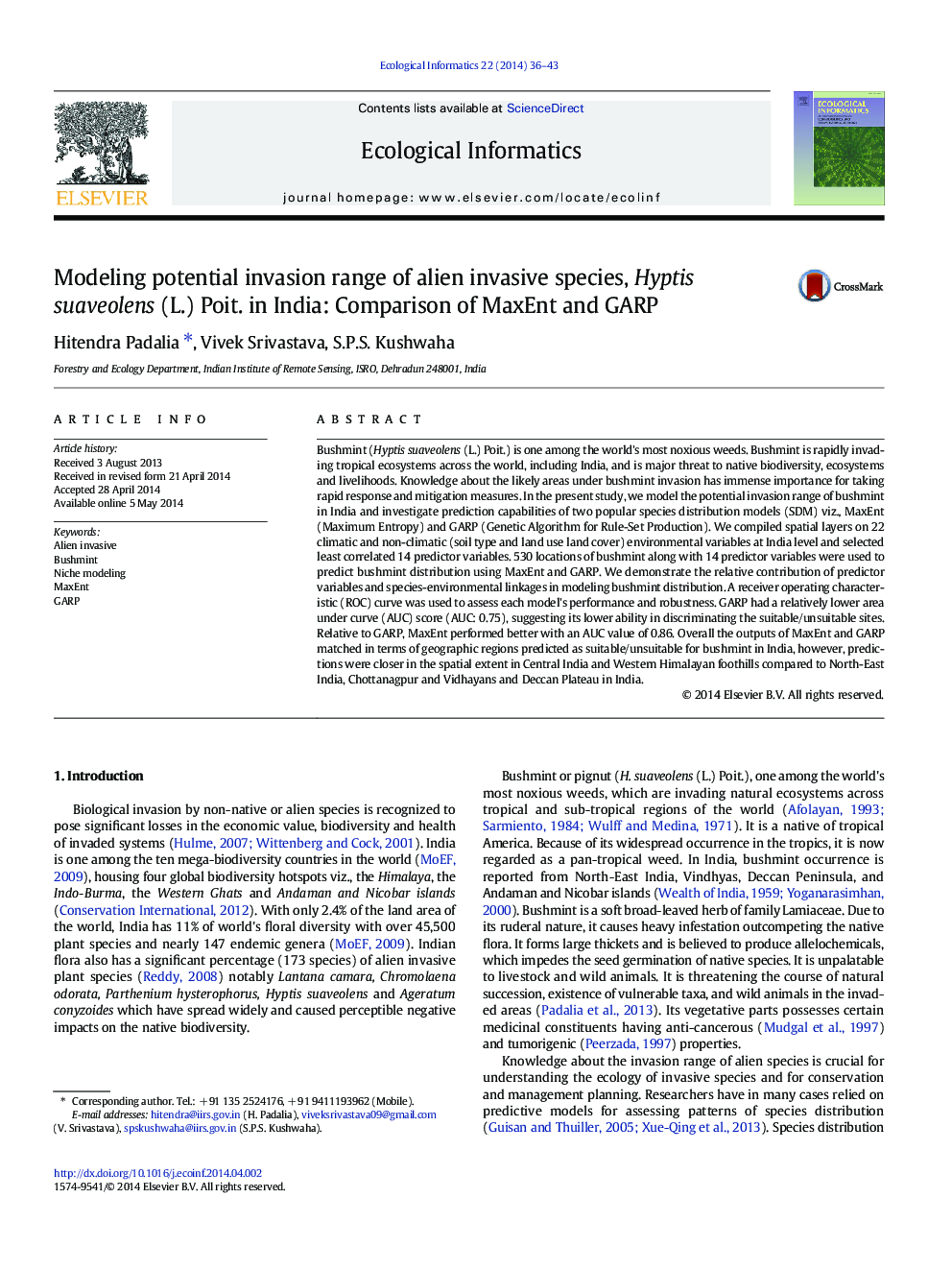| Article ID | Journal | Published Year | Pages | File Type |
|---|---|---|---|---|
| 4374879 | Ecological Informatics | 2014 | 8 Pages |
Abstract
Bushmint (Hyptis suaveolens (L.) Poit.) is one among the world's most noxious weeds. Bushmint is rapidly invading tropical ecosystems across the world, including India, and is major threat to native biodiversity, ecosystems and livelihoods. Knowledge about the likely areas under bushmint invasion has immense importance for taking rapid response and mitigation measures. In the present study, we model the potential invasion range of bushmint in India and investigate prediction capabilities of two popular species distribution models (SDM) viz., MaxEnt (Maximum Entropy) and GARP (Genetic Algorithm for Rule-Set Production). We compiled spatial layers on 22 climatic and non-climatic (soil type and land use land cover) environmental variables at India level and selected least correlated 14 predictor variables. 530 locations of bushmint along with 14 predictor variables were used to predict bushmint distribution using MaxEnt and GARP. We demonstrate the relative contribution of predictor variables and species-environmental linkages in modeling bushmint distribution. A receiver operating characteristic (ROC) curve was used to assess each model's performance and robustness. GARP had a relatively lower area under curve (AUC) score (AUC: 0.75), suggesting its lower ability in discriminating the suitable/unsuitable sites. Relative to GARP, MaxEnt performed better with an AUC value of 0.86. Overall the outputs of MaxEnt and GARP matched in terms of geographic regions predicted as suitable/unsuitable for bushmint in India, however, predictions were closer in the spatial extent in Central India and Western Himalayan foothills compared to North-East India, Chottanagpur and Vidhayans and Deccan Plateau in India.
Keywords
Related Topics
Life Sciences
Agricultural and Biological Sciences
Ecology, Evolution, Behavior and Systematics
Authors
Hitendra Padalia, Vivek Srivastava, S.P.S. Kushwaha,
